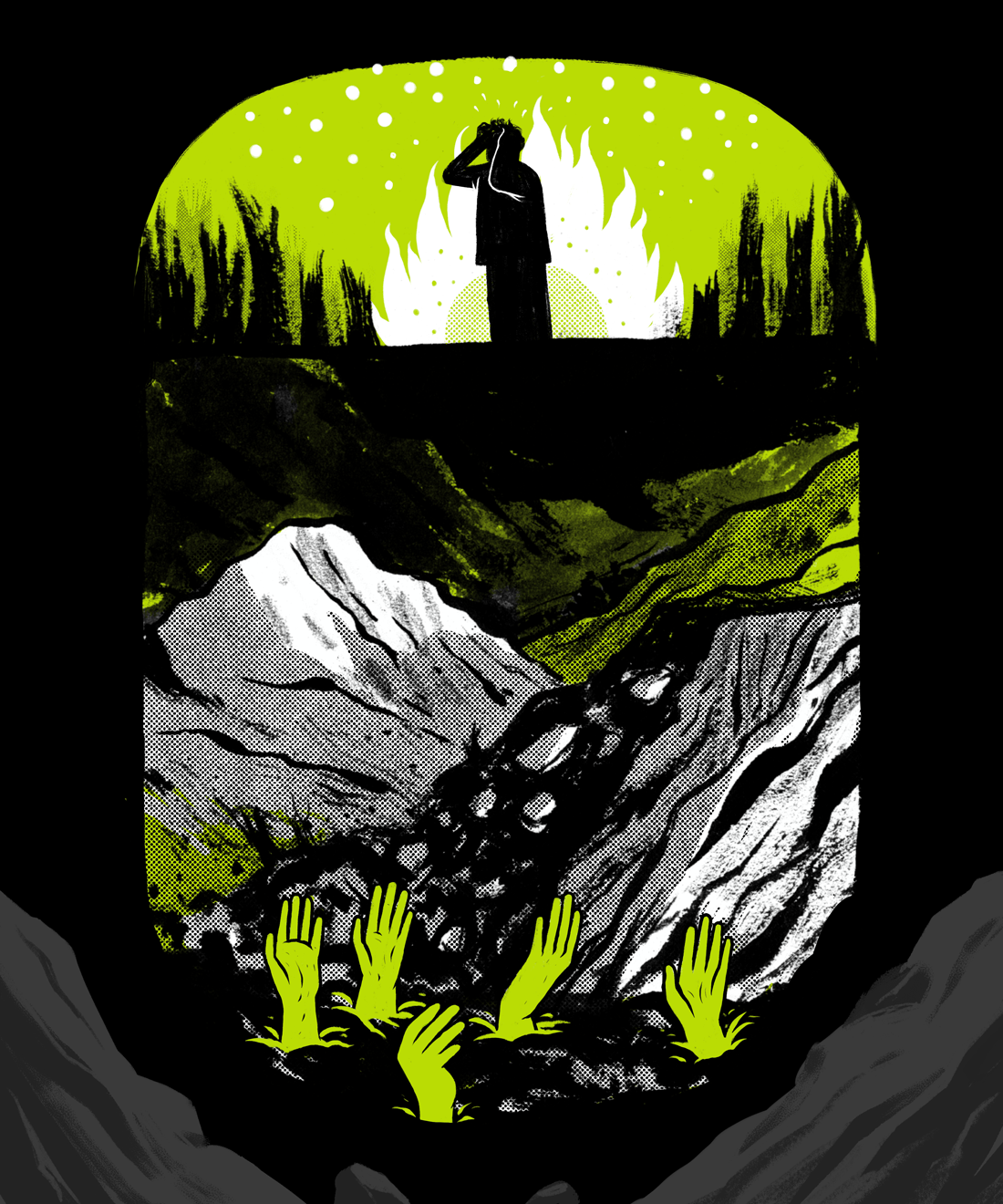Emerging youth resistance: ‘No Means No’
Over the last two decades, as dam-building progressed in this tribal valley, so did resistance – both in the streets and in the courts. But the two tragedies during the 2021 monsoon provoked the vibrant youth from Upper Kinnaur to up the ante. Among the resisters is 20-something Sunder, who left a bank job in Zirakpur back in 2018. “The mundane desk work was burning me out and I knew that I belonged back here. I faced flak from family and relatives for quitting initially.” In the following two years, Sunder set out to build relationships with the community, getting involved in village matters, and pushing for basic welfare schemes like that for a link road which had been stuck in files. Through the lockdown in 2020, he participated in reviving collective farm labour practices in his village of 18 families, an experience that helped him build deeper connections with his people. Sunder teamed up with other energetic, like-minded youth from neighbouring villages to push their leadership in the local panchayat. “Political parties approached us but we were here for the community work and to foster the spirit of co-operation, not their narrow agendas.” He was elected president of the youth club in his village, Khadra in 2020.
Around this time, news had spread of an upcoming dam that Sunder’s Panchayat, along with five others in the Moorang tehsil, were to be impacted by. For Buddha Sain, who hails from the other affected Panchayat of Jangi, the proposed project raised existential questions. “Tribal laws grant power to the gram sabhas to make such decisions,” he observes sharply. In April 2021, the proposed 804 MW Jangi Thopan Project, to be constructed by the Satluj Jal Vidyut Nigam (SJVNL) which had also built the Nathpa Dam, was opposed openly at a public meeting in Jangi. Under the leadership of the youth clubs and guided by the gram sabhas, mahila mandals, and village elders, the project survey was blocked. Since then, a by-election boycott has been organised as well as several village assemblies where the youth in their thundering speeches have challenged the government’s blatant disregard for public opinion.
It is this grassroots movement, preceded by a decade-and-a-half-long struggle of the Kinnaura people, that lies at the foundation of the clarion call of “No Means No” spreading through the district, including in lower Kinnaur. “Upper Kinnaur is way more geologically sensitive and not suited to this kind of construction. We are all part of the movement,” says Sunil from Nichar. Young, local social media influencers from Kinnaur threw their creative weight behind the resistance but the campaign was never restricted to just digital activism. Slogans to halt further construction of dams reverberated from a rally at the district headquarters of Reckong Peo on 26th August 2021. In Kinnaur, cars with stickers, walls with posters, and young people wearing tee-shirts with the message ‘NO MEANS NO’ written in the bold font can now be spotted.





















